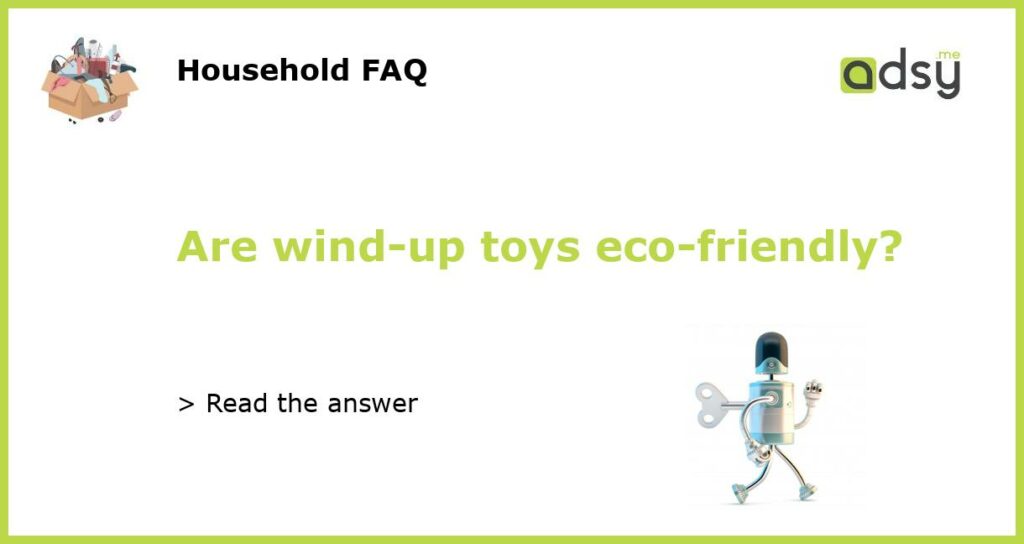The Environmental Impact of Wind-Up Toys
Wind-up toys have been a popular form of entertainment for generations. These toys involve a mechanical spring that must be wound up by hand in order to operate. But as the world becomes more environmentally conscious, many people are questioning the impact that wind-up toys have on the planet. Are wind-up toys eco-friendly?
Material Composition of Wind-Up Toys
One aspect to consider when determining the eco-friendliness of wind-up toys is the materials used in their construction. Typically, wind-up toys are made from a combination of plastic, metal, and sometimes even wood.
The plastic component of wind-up toys can be concerning from an environmental standpoint. Most plastics are derived from non-renewable fossil fuels, and they can take hundreds of years to decompose in landfills. Additionally, the production and disposal of plastics create significant pollution and contribute to climate change.
However, it is important to note that not all wind-up toys are made entirely of plastic. Some manufacturers are now using more sustainable materials, such as recycled plastic or biodegradable alternatives. Additionally, wind-up toys made from metal or wood may have a lower overall environmental impact than those made solely from plastic.
Energy Efficiency of Wind-Up Toys
Another factor to consider when evaluating the eco-friendliness of wind-up toys is their energy efficiency. Since wind-up toys do not require batteries or electricity to operate, they are often seen as a more sustainable alternative to battery-operated toys.
By relying on manual winding, wind-up toys do not contribute to the consumption of natural resources or the generation of greenhouse gases associated with energy production. This can make them a more environmentally friendly choice for those concerned about reducing their carbon footprint.
However, it is worth noting that the energy efficiency of wind-up toys may vary depending on the specific toy and its design. Some wind-up toys may require more winding to operate, while others may have a longer duration of play before needing to be rewound. As a result, it is important to consider the individual toy’s efficiency when evaluating its overall impact on the environment.
Lifespan and Durability of Wind-Up Toys
The lifespan and durability of a toy can also play a role in its eco-friendliness. Wind-up toys, due to their mechanical nature, are generally designed to be more durable than battery-operated toys.
This durability can result in a longer overall lifespan for wind-up toys, reducing the need for frequent replacements and ultimately reducing waste. When compared to battery-operated toys that may require frequent battery changes or replacements, wind-up toys can be seen as a more sustainable option.
The Future of Wind-Up Toys and Sustainability
As consumer demand for eco-friendly products continues to grow, manufacturers are becoming more aware of the need to produce sustainable toys. This includes wind-up toys. In recent years, there has been a movement towards using more sustainable materials and reducing the environmental impact of toy production.
Some companies are now manufacturing wind-up toys using recycled materials, reducing their reliance on non-renewable resources. Additionally, advancements in technology have allowed for the development of more energy-efficient wind-up mechanisms, further reducing the environmental impact of these toys.
In conclusion, while not all wind-up toys are inherently eco-friendly, there are steps being taken to improve their sustainability. By considering the material composition, energy efficiency, lifespan, and durability of wind-up toys, consumers can make more informed choices and support manufacturers that prioritize environmental responsibility.






